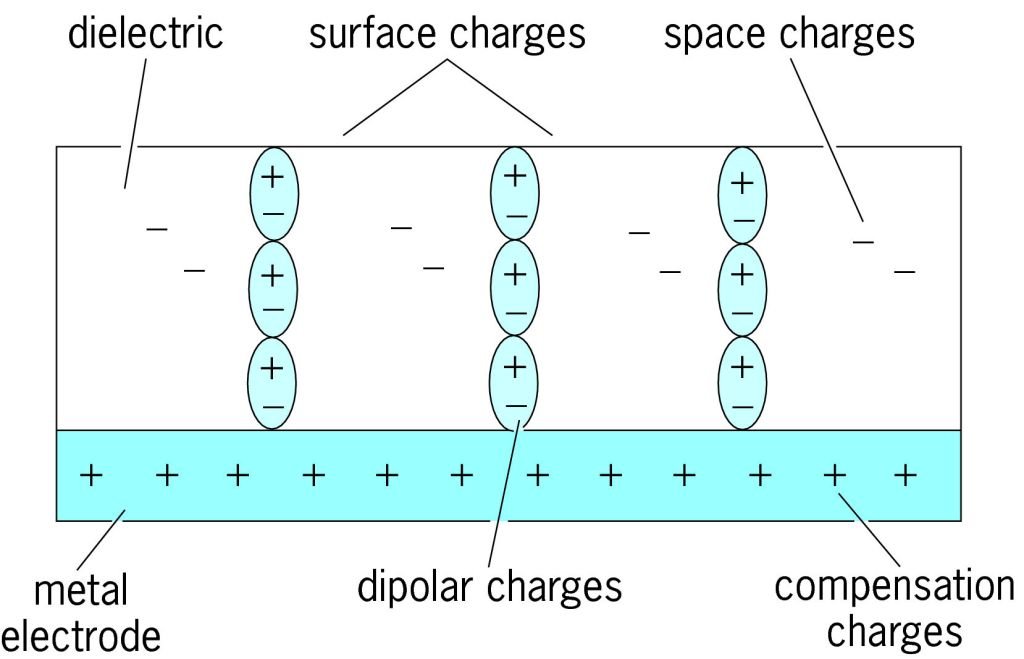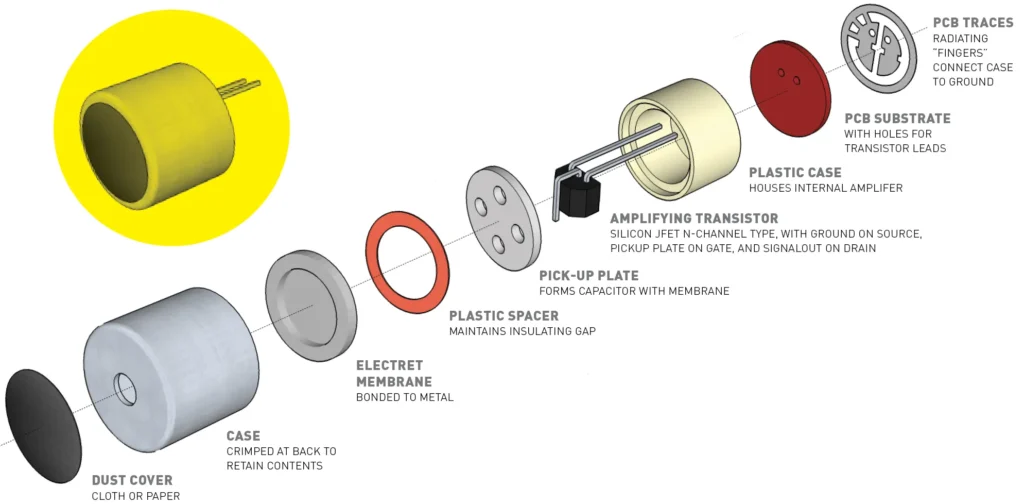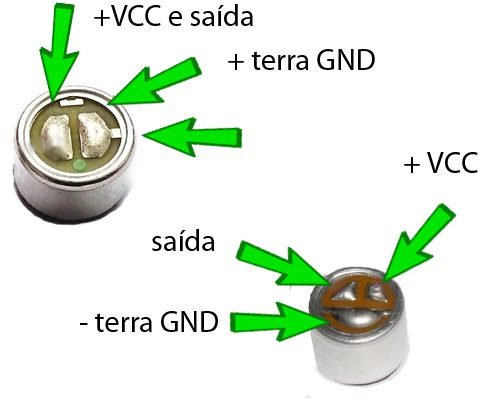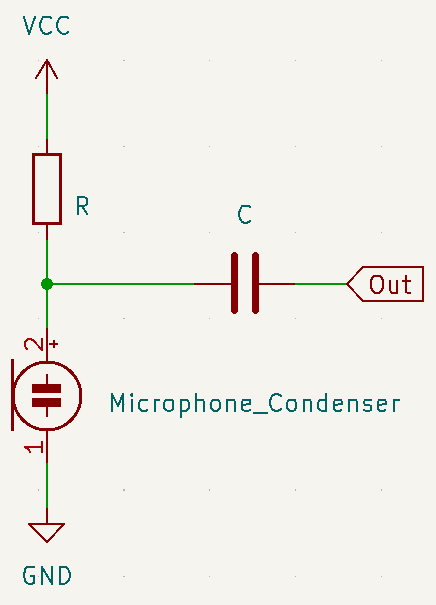The electret microphone is very used in electronic projects, due to its low cost, size, good sensitivity, and mechanical resistance.
What is electret?
It’s a dielectric or insulating material, which has its electric dipoles organized in a way that the material has a static electric charge, even without the presence of an external electric field. Similar to a permanent magnet, which has a magnetic field on its own.

When this material is under pressure, mechanical deformation, or even infrared radiation, the electric charge concentration is changed, producing a small differential potential that needs to be amplified.
Electret microphone operation
Also known as capacitive microphone, because it works with the principle of capacitor. The electret membrane is a film made of mylar, with one side metalized.

Post about JFET operation.Click here

The black piece of cloth made of felt prevents dust entrance.

When sound enters on microphone, diaphragm moves, which in turn moves the electret film with a metallic side. This vibration changes capacitance and charge concentration on the electret, that generates a variation in the electric signal, which is amplified by FET.
Polarizing electret microphone

According to many datasheets, the maximum current consumption on electret microphones is 0.5mA. With that, you can calculate the value of R resistor, which depends on supply voltage VCC. Usually, VCC voltage range is between 1.5V and 12V. The capacitor serves to filter direct current from the source, allowing only audio signal’s passage. C’s value can be between 100nF and 10μF. Choosing arbitrarily VCC, can calculate R.
R=\frac{VCC}{I}=\frac{VCC}{0,5m}


